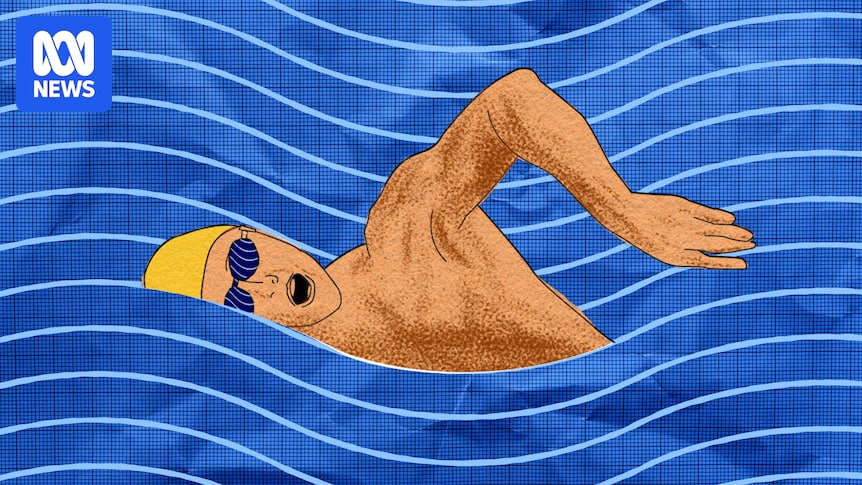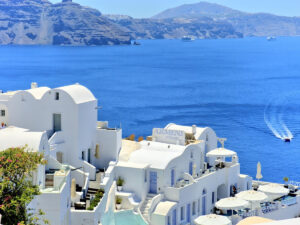
It takes just one breath. The moment Cameron McEvoy launches himself from the blocks, he exhales sharply, then inhales as he flies through the air. For the next 21 seconds, no more breaths are taken as he breaks the water’s surface, glides underneath, and emerges, his arms and legs working in concert to power him down the 50-meter freestyle lap.
Years of stretching every tendon, testing every joint in the gym, and training at maximum capacity in the pool—all in pursuit of those 21 seconds. From the stands or on television, it appears as a chaotic blur of arms, legs, and white water. But for McEvoy, every moment is meticulously orchestrated to achieve harmony. “I’m basically in the hunt for perfection,” he says. The question remains: how close can he get?
Blurring the Lines Between Sport, Science, and Art
McEvoy is arguably the best 50m freestyler in the world. He clinched the gold medal at the World Championships in Fukuoka in 2023 and followed it with a victory at the Olympic Games the previous year. At the Australian Swimming Trials in June, he emerged from the water after winning the 50m freestyle final in 21.3 seconds, calling it a “pretty nice swim.” That time remains the fastest this year as he heads into the world championships in Singapore.
Yet, McEvoy seeks more. “I’ve got that [Olympic] gold medal, and I’ve got the world championship gold medal. I guess you could say the chip is off the shoulder, or the leash is off, and I feel like I have free rein now to go after a time,” he tells ABC Sport. His quest now is to blur the boundaries of sport, science, and art until they become indistinguishable.
Much has been made of McEvoy’s undergraduate degree in mathematics and physics. Nicknamed “The Professor,” his scientific mindset provides him the tools to critically evaluate his approach to swimming faster than anyone before him.
Revolutionizing Training Techniques
McEvoy’s journey began by discarding traditional training methods and examining the techniques of other power athletes for potential application in swimming. “You need to have the fitness to sprint for 50m,” he explains. “You need the strength to apply that force to the water and the mobility to execute the freestyle stroke without fighting against your body’s limitations.”
Instead of logging long hours in the pool, McEvoy focused on gym work, swimming only two or three kilometers weekly but at maximum intensity. His approach views the 50m as a series of individual components. His personal best of 21.06 seconds, which won him the world title two years ago, is broken down into segments.
“The way I break it down is you have your first 15-meter segment, and then you have your swimming part afterwards, which also can be broken down into its various components,” he says.
McEvoy’s first 15m in Fukuoka took 5.22 seconds—slower than his competitors. He believes shaving 0.2 seconds off that start could propel him into world-record territory. “The 50m race is a race where you start from a dead start on the block, but the jump is your highest velocity that you reach in the entire race,” he notes.
To improve his dive, McEvoy spent six months out of the pool after the Olympics, focusing on strength training. “It boiled down to two things: take-off velocity off the block, which is a function of your vertical jump, and the ability to get into streamline, which is the function of mobility.”
The Intersection of Science and Sport
McEvoy’s improvements were evident at the Australian Swimming Trials in Adelaide. “I was 0.2 [seconds] quicker to 15m than I was in Fukuoka, but my swim speed was 0.4 slower,” he says, attributing this to his late start in swimming that season. His mobility also improved, as shown by measuring joint angles.
The next challenge is refining the remaining 35 meters of swimming after the initial dive momentum fades. “If you can train the same speed of decay throughout the race, as the Fukuoka swim, then technically every 5m segment could be a tad faster as well by 0.02, 0.03 [seconds],” he explains.
McEvoy’s physics background often conjures analogies to waves traveling in sync. “When they perfectly align with each other, they kind of add to each other,” he says. “If they’re slightly off, or out of phase, then they can detract from each other.” When everything aligns, “It’s unreal,” he says, describing the feeling as what keeps him in the sport.
The Pursuit of Perfection
McEvoy’s goal is to integrate all elements of his training. The world record in the 50m freestyle of 20.91 seconds, set by Brazilian Cesar Cielo, remains one of the few records from the supersuit era. McEvoy believes Cielo’s time is within reach. “If you take my best start to 15m and my best 15m to 50m and combine them, I’m 0.02 under the world record,” he says.
Yet, perfection is elusive. A stroke might be out of alignment, or a kick slightly off-sync. McEvoy aims for near-perfection while maintaining consistent excellence. “I could have upwards of 500 reps under my belt of suiting up, replicating the race, and sprinting and training before I even get behind the blocks,” he says.
McEvoy’s not in a hurry. At 31 and a veteran of four Olympic Games, he has a full life outside the pool. Earlier this year, he married his partner, Maddi, and they welcomed their first child. Win or lose in Singapore, his focus includes family and a potential run at the 2028 Olympics in Los Angeles.
For now, McEvoy remains committed to his unique blend of swimming, science, and art, with much left to discover. “I’m very passionate about what I’m doing, not only for personal reasons and achieving what I want to achieve in the water but also with how the ideas I’m bringing to the table will continue to change the sport forever,” he says.







